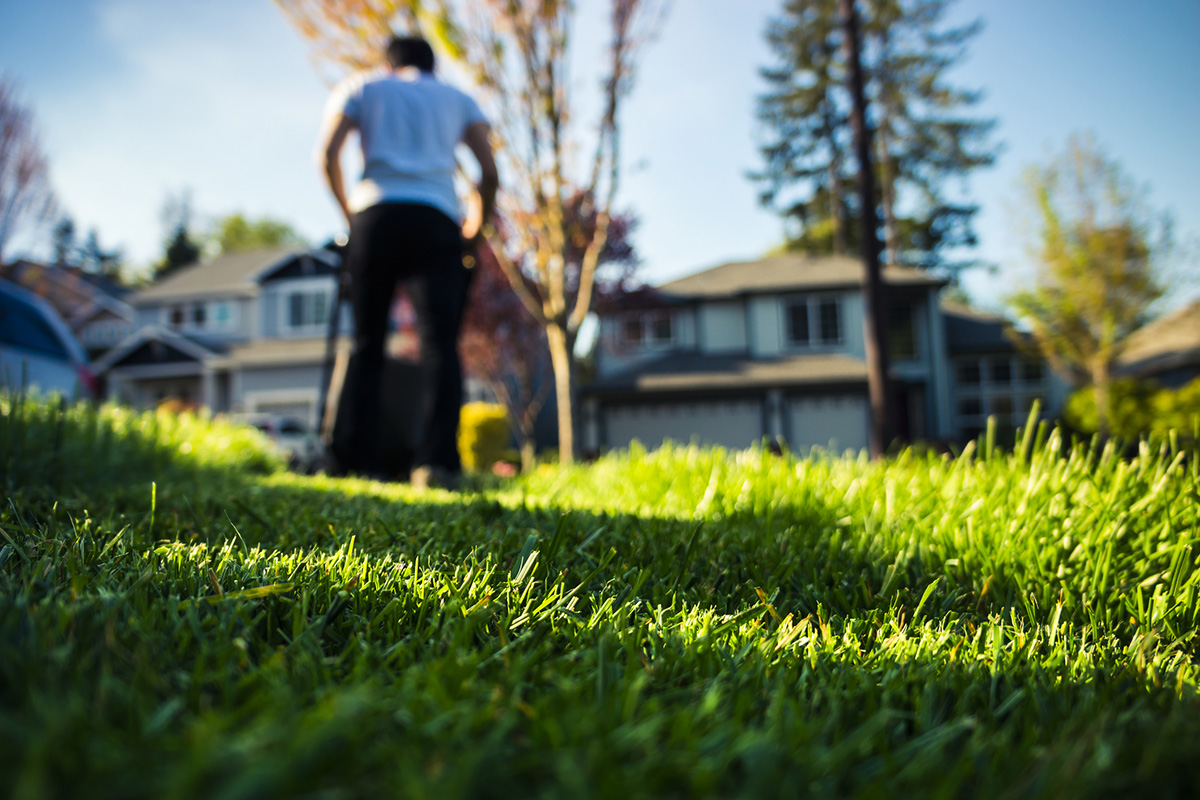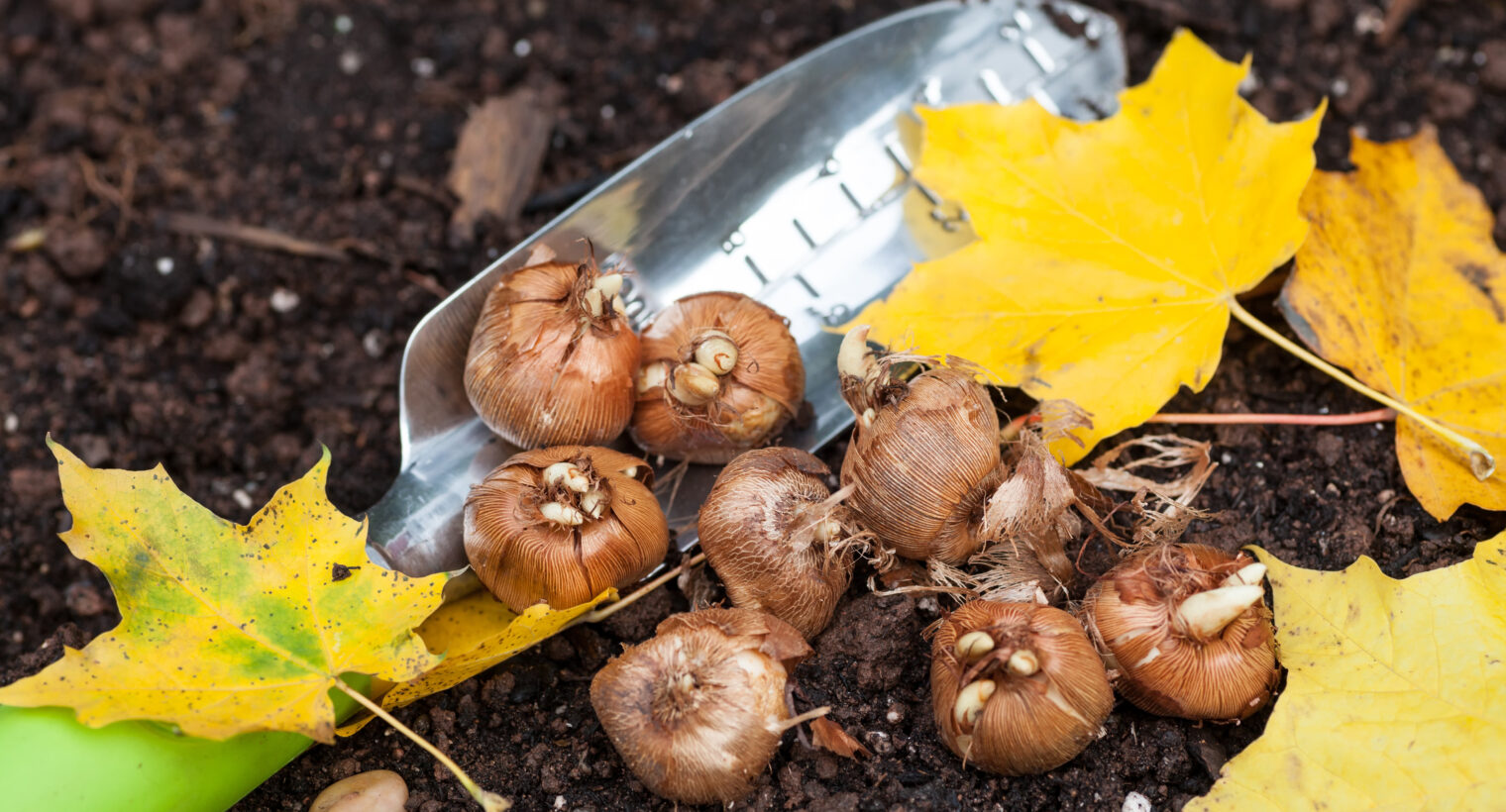By Sally Cunningham
For many plants and many gardeners, fall is a wonderful season for planting. While most of us love spring—nothing like that heady feeling of the first warm breezes—that season has its downsides: Late frosts, cold soil, and extended rainfall challenge us. Joyful exhuberance also encourages many people to trample the wet clay soil (causing damaging compaction) or to plant tender plants prematurely.
The advantages of fall planting
- Usually generous rainfall, with plenty of drying-out time in between
- You can see the real size and shape of your landscape and garden plants
- Garden centers have plants that show late-season flowers and fall color
- It’s the only time to plant bulbs for spring flowers
- The weather is often cool and comfortable for working
- The kids may be back to school and some people watch football, so you are free?
- Sometimes you find good sales. (I don’t want to overstate this, because you should only buy plants on sale that have good root systems and don’t appear stressed. Well maintained plants in a quality nursery still have high value.)
What to plant and how to plant them
Bulbs for spring flowers
Bulbs should be planted soon, throughout October. Technically you can do so until the ground is frozen, however it is best to get their roots growing before the freeze, Buy locally, but if you cannot find them, there are great online sources. (Brent and Becky’s Bulbs, and Colorblends are personal favorites.) Buy only bulbs that are firm. Plant pointy end up, if they have a point, at the depth and spacing that the package or tags advise. If your soil isn’t fertile and workable, mix in commercial garden soil and fertilizers labeled for planting bulbs.
While daffodils, Camassia, and alliums are not attractive to most browsing animals, most other bulbs (i.e. tulips) are fodder for creatures that dig them up now, or nibble them in spring. Consider covering the bulb patches with chicken wire, grates, gutter guards, or whatever you have, and mulch on top. Mark where you planted so you don’t wreck them in spring. Many people use repellants on the bulbs before planting, or sprinkle it liberally over the area (now and when the plants are emerging.)
Bulbs give many people the most satisfaction in spring with the least effort and disappointment. Try some, and plant swaths of the same kind for maximum impact. When in doubt, choose daffodils.
Perennials—Now or Not?
Many gardeners get away with planting herbaceous (non-woody) perennials well into October, but in my experience success rates decrease after September. If you have some potted perennials crying out for planting, then do it carefully. Consider their small and fragile roots, that are vulnerable to drying out or drowning or the heaving/thawing patterns of winter. (The roots haven’t had time to anchor the plants in place.) If you plant them, work up the soil very well, add lots of compost, and water them until the soil freezes. After that, put lots of mulch on top. Mark the plant location so you do not forget to uncover them and protect them.
If you think that planting perennials (or shrubs) is too risky, considering the site and your typical weather, try a holding bed: This is a wide trench, loaded with compost, chopped leaves, or straw, where you sink the entire pots at the normal planting level. They’re much safer than above ground, where the pots are exposed to temperature extremes. Or you might cluster your plants above ground against the warmer side of the house (usually the East side in our region), where they are sheltered. After freezing, mulch around them. Some gardeners harbor potted perennials in an unheated garage.
Trees and Shrubs (Woody plants)
This category offers the most opportunity for those who want to renovate or improve a landscape or to install a new one. It is less risky than planting perennials because these larger plants have a larger root ball—if they have been well maintained. Think of it this way; Probably they will be stored and go dormant (frozen) in an unheated place in a nursery or garden center anyway. So a good planting site at your house may be just fine for them.
Fall planting requires some special care.
- Plant selection is key. Read about the species’ site requirements and make the match. Do not plant high-risk plants now, meaning Zone 6 or otherwise fragile selections. Trust your professional landscaper about which plants might do best if planted in spring. Deer are particularly needy over winter, so consider whether this is the time to plant a popular deer favorite. (In warmer months they have many more choices, and you are likely to be present in the yard to discourage them.)
- Dig wide holes—don’t be lazy, Typical advice is to dig a hole three times as wide as the pot or root ball, but only as deep. You should see the root flare just above the soil level when you finish. Too deep is deadly. Have lots of compost standing by to mix in with your soil for backfill. No skimping. Compost greatly increases the moisture-holding capacity of the soil.
- Water the soil before and after. If it hasn’t been raining lately, fill the hole with water before the planting job, and let it drain out before planting. The purpose is to wet the area so that the surrounding dry soil doesn’t suck up all the moisture..
- Now pull or cut off the pots and look at the roots. If they are totally bound up, unravel what you can. Make a couple of slits, and very gently pull some of the root mass outward. The trick is to free up some roots without damaging most of them. A torn-apart root ball dries out quickly, so go easy. If your woody plant is balled-and-burlapped, then pull of the burlap and wire carefully before planting. Don’t let anyone plunge the root ball into the soil still wired and burlap-wrapped.
- Complete planting as usual—with the crown no more than an inch above the soil level. The lazy planting jobs (done because the soil is heavy) with little mounds above-ground, have very poor odds. Water thoroughly. In a dry period, after placing the plant, backfill around it halfway, till the hole with water, and finish the backfill when the water has drained. Then water again.
- Pat the soil over the root ball firmly. Air pockets are destructive. (But this doesn’t mean stomping on the poor roots full force.)
- Stash mulch nearby, but don’t put it on yet (so rain can reach the roots, and so mice won’t nest under the warm mulch.) When the ground freezes, then mulch.
- Keep the hose out, to water until the ground freezes and plants are dormant.
- If you have active animal populations, consider fencing, wrapping the trunks, or winter “shrub-coat products or a burlap wrap.
What about evergreens?
You may plant evergreen plants in autumn, such as spruces, firs, junipers, and pines, but there is risk. They are generally more vulnerable to winter damage or death for one reason: They continue to lose moisture through their leaves (needles) all winter, and meanwhile their roots are frozen so they cannot replace the moisture. (Plants that are deciduous (that drop their leaves) aren’t losing moisture into the air, so they are safely dormant. Evergreens are easily damaged by drying winter winds.
I hope you have a great fall season, tending your landscape and garden, and planting something new.
_________________________________


